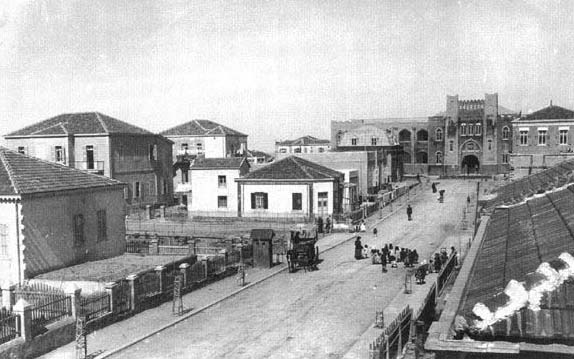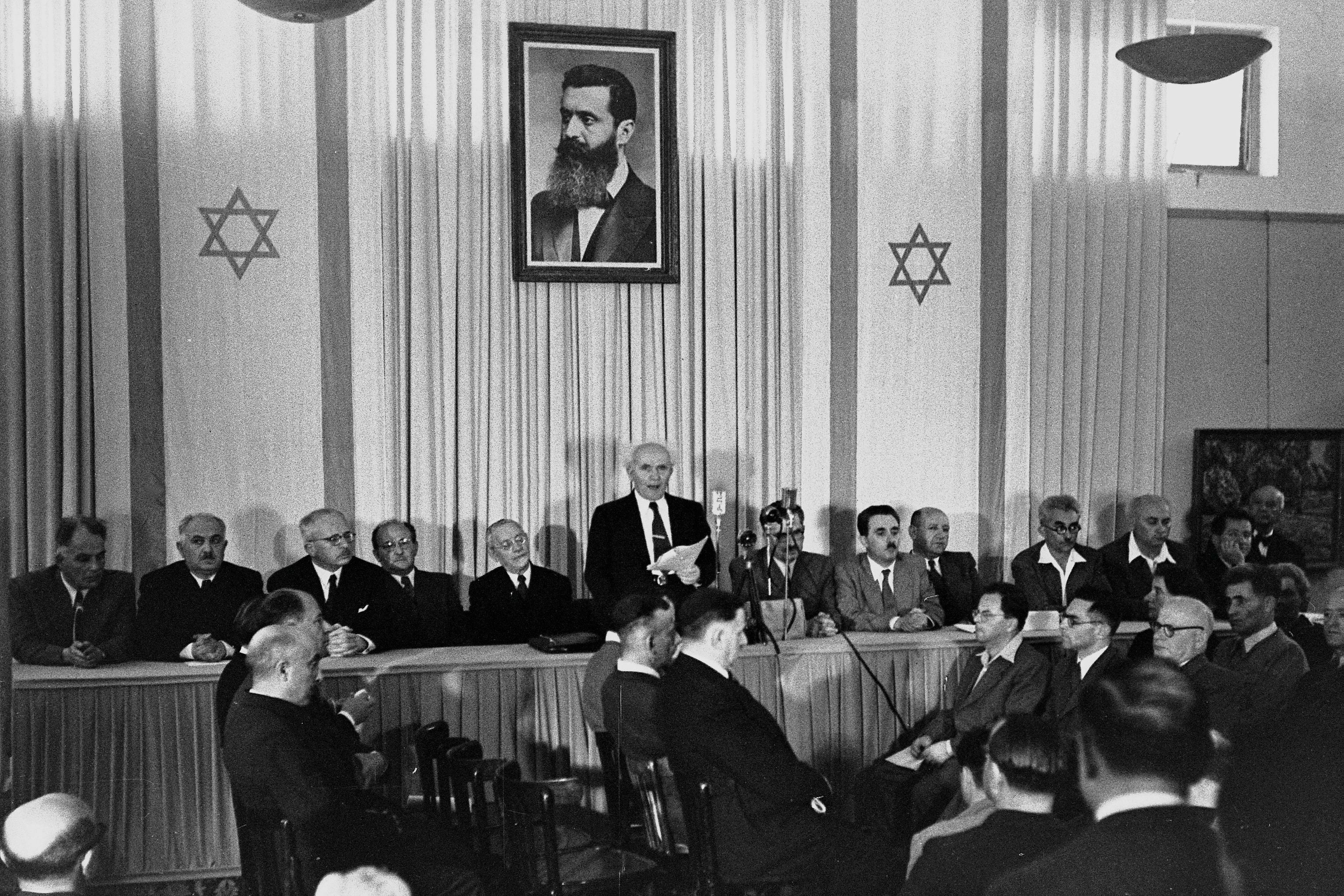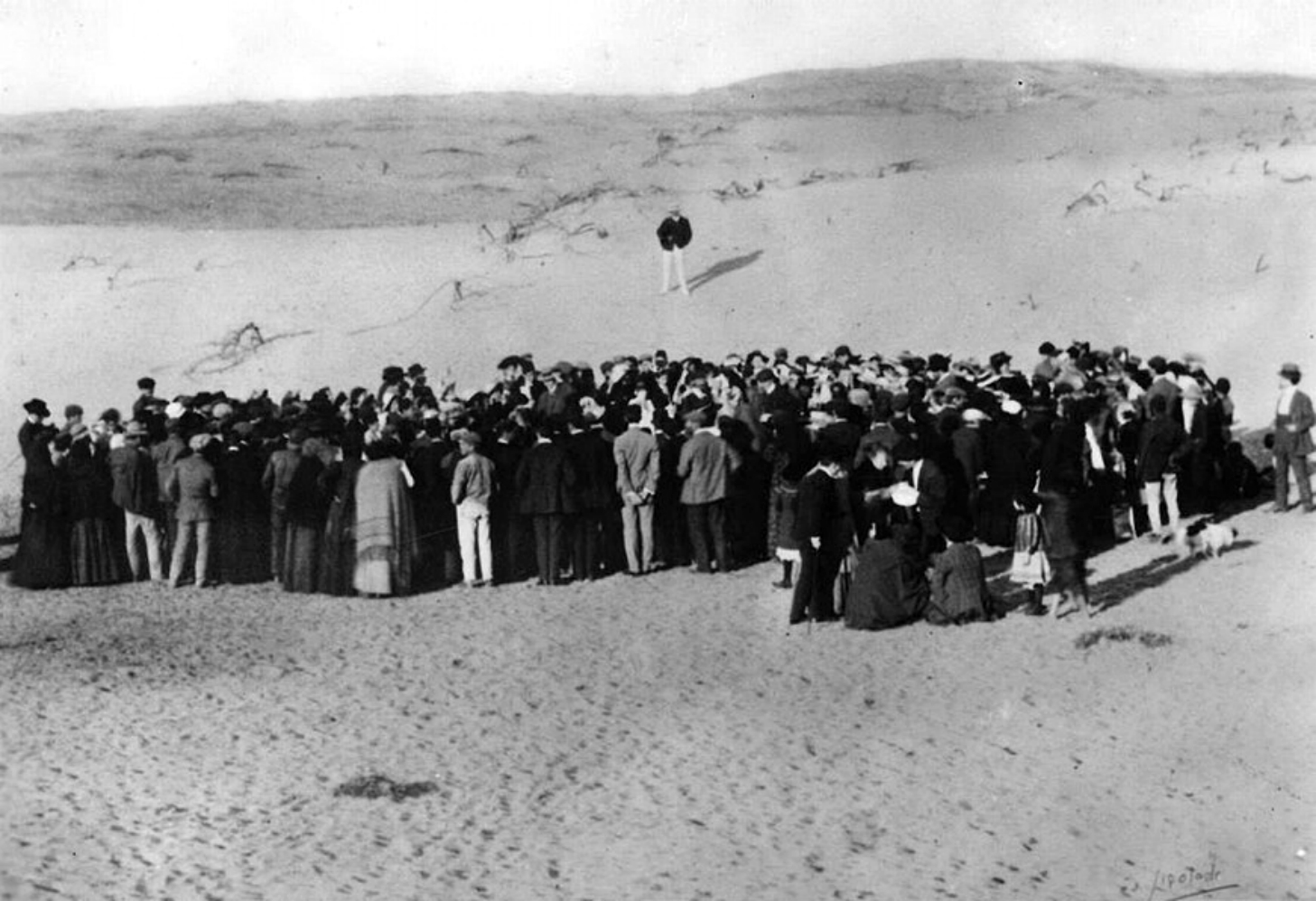As the building in Neve Tzedek continued, a group of pioneering individuals purchased a few acres of empty dunes north of Yaffo. Of course, there were disagreements between the settlers over who got which piece of land, so they cast lots to select parcels (reminiscent of Joshua's division of the land in Sefer Yehoshua, the Book of Joshua.)
Their new town would be called "Tel Aviv," the Hill of Spring. It's a reference to the book of Yehezkel (Ezikiel) 3:15, "Then I came to them of the captivity at Tel Aviv, that lived by the river Chebar, and to where they lived; and I sat there overwhelmed among them seven days."
 Early Tel Aviv.
Early Tel Aviv.The main street of the new city became, appropriately, Hertzl Street.
 On Hertzl Street. One of our tourists holds up an old photo of the street. Today the street is not what it used to be.
On Hertzl Street. One of our tourists holds up an old photo of the street. Today the street is not what it used to be.
 This espresso bar is actually one of the first structures built in Tel Aviv. At the time, it was an ice cream parlor. Anyone who's ever experienced Tel Aviv's miserable summer humidity, and then imagines the days before air conditioning, can understand why this was a priority.
This espresso bar is actually one of the first structures built in Tel Aviv. At the time, it was an ice cream parlor. Anyone who's ever experienced Tel Aviv's miserable summer humidity, and then imagines the days before air conditioning, can understand why this was a priority.
In one of the ironies of history, many of the early Zionists fleeing persecution in the German-speaking countries were architects and artists, who brought with them the Bauhaus architecture of their birth lands, with its simple, open design, focused on functionality. Later, when the Nazis came to power, they opposed the style as being to decadent and reminiscent of the failed Weimar Republic. After Germany was bombed to rubble after world War II, Tel Aviv became one of the only places where original Bauhaus architecture still existed, and in 2003 Tel Aviv was declared a United Nations World Heritage Site. Some of the Bauhuas architecture. It was a bit tough to do it justice at night.
Some of the Bauhuas architecture. It was a bit tough to do it justice at night.
The house of Tel Aviv's first mayor, Meyer Dizengoff (which I thought was amusing, you know, Meyer is the Mayor, ha ha,) anyway, his house was used for Israel's declaration of Independence.

It didn't typify the Bauhaus architecture for which Tel Aviv was famous. In fact, is was quite an ugly building. So why was it used? As is so often the case in Jewish history, great achievment against impossible odds was spurred by the lack of any other option. In an attempt to strangle Jewish freedom in the grave, the Arabs had already besieged Jerusalem and the Egyptians were marching north. Israel had no choice but to declare independence and fight the odds.
As is so often the case in Jewish history, great achievment against impossible odds was spurred by the lack of any other option. In an attempt to strangle Jewish freedom in the grave, the Arabs had already besieged Jerusalem and the Egyptians were marching north. Israel had no choice but to declare independence and fight the odds.
Meir Dizengoff's house was selected for the Declaration of Independence not for any historic reasons, but because it had small windows and a large basement, where they could be protected. The Egyptian air force was already in the air, ready to begin the areal bombardment of Tel Aviv.
David Ben Gurion declares independence in Tel Aviv on May 14, 1948. 11 minutes later, the United States was the first country to recognize the reborn State of Israel, and Egypt was the first nation to attack.

No comments:
Post a Comment